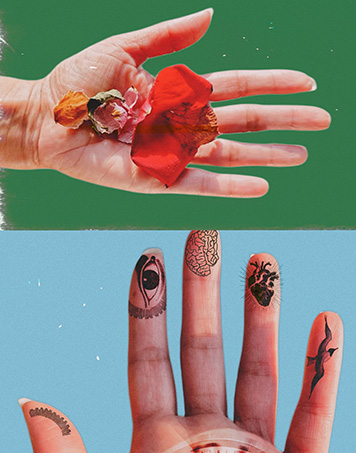Oct 27, 2018 | 10:45 AM - 12:15 AM | Main Loft
Nadir Ali University of Sindh
Code-Mixing of English in Urdu Electronic Media: A Case Study of Pakistan’s leading News Channel Geo Television
In a multilingual and bilingual society, the fact of code-mixing is done often. This is also demonstrated in different written and verbal communications. This research will explore the scope to which code-mixing is observed in the programs & news bulletins of Pakistan’s leading Urdu News Channel Geo Television. A qualitative approach will be applied to this case study, examining the programs and news bulletins of the channel Geo News for the month of February & March 2018. Those sentences and words which show code-mixing will be fixed appropriately with deliberations below them. Samples will definitely show the amazing outcomes along with their socio-political motives raging from choice of language to linguistic supremacy and influence. Code-mixing leads to language crossbreeding that in return creates issues of language protection and change. These entire circumstances have momentous socio-cultural and political repercussions in the framework of globalization and beginning of English as a universal language in the recent times which has posed a serious challenge to the endurance of local and domestic languages of many nations.
Kit Ying Lye, PhD Singapore University of Social Sciences
Why We Still Speak Our Dialects
The emergence of the English language as Asia’s lingua franca, and political developments in Mainland China have led to the decline of Chinese dialects in the Southeast Asian region. In Singapore, the use of dialects has declined since the launch of The Speak Mandarin campaign in 1979. The extensive use of English and Mandarin in official and everyday occasions (even though there are four official languages in Singapore) means that dialect speakers with a weak command of English and Mandarin are “left behind” during the country’s rapidly modernization. The use of dialects is thus, most problematically, associated with lower-middle to lower class citizens living in the heartlands.
Yet, the heartland is also the space where majority of Singaporeans forge their cultural and national identities. The market place and the public housing areas are where people of different races and cultures come together to interact and build relationships and forge communities. Residents communicate with each other not with Singlish but via a unique language consisting of bazaar Malay, informal Mandarin, Teochew, Cantonese, Hokkien, and to a lesser extent, Hakka and Hainanese. The use of dialects in these everyday settings allows speakers to reinforce their identification with their respective cultures, which in turn, reinforces their sense of belonging to Singapore. The efficacy of dialect in promoting and maintaining a common identity is evident, as seen with the positive reception of Nine Years Theatre’s recent staging of Kuo Pao Kun’s The Coffin is Too Big for the Hole and No Parking on Odd Days in Teochew and Cantonese. Through an examination of selected scenes from Royston Tan’s film, 881, and the two plays by Kuo Pao Kun, this paper argues that it is polyculturalism and multilingualism, rather than a homogeneous multiculturalism that forges a strong common identity.
Biographies
Nadir Ali Mugheri, MPhil
Nadir Ali Mugheri is a researcher working with the University of Sindh, Jamshoro, Pakistan. He recently completed his M.Phil in English Linguistics and plans to enroll in a PhD program next year. His five papers have been published in various research journals, and he has presented a number of research papers at different universities in Pakistan. In 2017, he presented his research paper "The Role of Pragmatics in English Language Teaching" at the Art Center of Kobe, Japan. He will also present his research paper at a conference in Brighton, UK in August 2018.
Kit Ying Lye, PhD
Dr. Kit Ying Lye is currently a lecturer at Singapore University of Social Sciences. Her dissertation focuses on the use of magical realism in the re-presentation of violence that occurred during the Cold War in Southeast Asian literature. Her research interests include magical realism, the Cold War in Southeast Asia, history and its remembrance, postmodernism, and postcolonialism. She has published writings that discuss the use of literature to represent civil wars in Southeast Asian countries.
